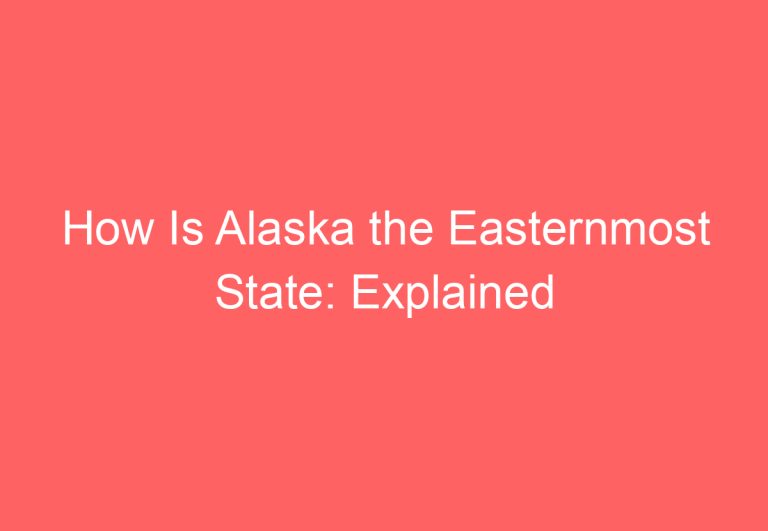Does Alaska Always Have Snow? Exploring the State’s Winter Climate
Alaska is often associated with snow, and many people wonder if it is always snowy in this northern state. The answer is not as straightforward as one might think. While Alaska is known for its cold and snowy winters, it also experiences distinct seasons with varying weather patterns.

The climate of Alaska is largely influenced by its location and topography. The state spans over 663,300 square miles, making it the largest state in the United States. The climate varies greatly across different regions, from the temperate rainforests of the southeast to the Arctic tundra of the north. In general, Alaska experiences long, cold winters and short, mild summers. However, the amount of snowfall can vary greatly depending on the region and time of year.
Contrary to popular belief, Alaska is not covered in snow all year round. While snow is common in the winter months, there are periods throughout the year when it is less likely to snow. The summer months, for example, are generally warmer and drier, with less snowfall. However, it is important to note that the amount of snowfall can vary greatly depending on the region and time of year. Overall, Alaska’s climate is complex and influenced by many factors, making it difficult to make generalizations about snowfall patterns.
Climatic Variations Across Alaska

Understanding Alaska’s Diverse Climate
Alaska is a vast state with a diverse climate that varies significantly depending on the region and time of year. The state’s climate can be broadly classified into three main categories: Arctic, Subarctic, and Temperate. The Arctic climate is found in the northernmost part of the state, while the Subarctic climate is found in the central and eastern parts of the state. The Temperate region is found in the southern part of the state, including the Aleutian Islands.
The state’s climate is also affected by its coastal areas, interior, mountains, and North Slope. Coastal areas tend to have milder temperatures due to the influence of the ocean, while the interior and mountains experience harsher winter conditions. The North Slope is the coldest part of the state, with temperatures dropping to below -50°F in the winter.
Temperature and Precipitation Patterns
The temperature and precipitation patterns across Alaska vary significantly throughout the year. In summer, temperatures in the southern part of the state can reach up to 80°F, while the North Slope may only see temperatures in the mid-30s. In winter, temperatures can drop to -40°F or lower in some parts of the state.
Precipitation patterns also vary across the state. Coastal areas tend to receive more precipitation than the interior, with the Aleutian Islands receiving the most rainfall. The North Slope is the driest part of the state, with very little precipitation throughout the year.
It is important to note that while Alaska is known for its cold and snowy climate, not all parts of the state receive snow year-round. The coastal areas and southern part of the state tend to have milder winters with less snowfall, while the interior and northern parts of the state experience harsher winter conditions with heavy snowfall.
In conclusion, Alaska’s climate is diverse and varies significantly depending on the region and time of year. Understanding these variations is crucial for anyone planning to visit or live in the state, as it can greatly impact daily life and activities.
Seasonal Snowfall and Best Times to Visit

Alaska is known for its cold and snowy climate, but does it always have snow? The answer is not straightforward, as weather patterns vary significantly depending on the region and time of year. In this section, we will explore the seasonal snowfall and the best times to visit Alaska.
Winter Snowfall and Activities
During the winter months, from November to April, Alaska experiences the most significant snowfall of the year. Snowmobiling, skiing, and snowshoeing are popular activities during this time. The days are shorter, with only a few hours of daylight, but the snow-covered landscape is breathtaking. The temperatures can drop below zero, so visitors should dress in layers and wear warm clothing.
Transition Seasons: Spring and Fall
The transition seasons, spring (May and June) and fall (September and October), are a great time to visit Alaska. The snow starts to melt, and the temperatures begin to rise, making it an ideal time for hiking and exploring the wilderness. However, visitors should be aware that the weather can be unpredictable during these seasons, with occasional snowfall and rainfall.
Summer: The Warmest Months
The warmest months in Alaska are typically June, July, and August, with average temperatures ranging from the 60s to low 70s. The days are long, with up to 20 hours of daylight, making it a great time for outdoor activities such as hiking, fishing, and wildlife viewing. However, visitors should be prepared for occasional rainfall and cooler temperatures in the evenings.
In conclusion, Alaska does not always have snow, and the best time to visit depends on the visitor’s interests and preferences. Winter is ideal for snow-related activities, while spring and fall are perfect for hiking and exploring the wilderness. Summer offers long days and a wide range of outdoor activities. Visitors should check the weather forecast before planning their trip and dress appropriately for the season.
Frequently Asked Questions

When is the snowiest month in Alaska?
Alaska is famous for its snowy climate, but the snowiest month varies depending on the region. The snowiest month in Anchorage is December, while the snowiest month in Juneau is January. In Fairbanks, the snowiest month is November. However, it’s important to note that these are just averages, and snowfall can vary significantly from year to year.
What parts of Alaska have the least snowfall?
Contrary to popular belief, it is not always snowy in Alaska. While snow is common in the winter months, there are periods throughout the year when it is less likely to snow. The Aleutian Islands have the least amount of snowfall in Alaska, with an average of just 22 inches per year. The coastal areas of Southeast Alaska also tend to have less snowfall than other parts of the state.
How do Alaska’s temperatures vary throughout the year?
Alaska’s temperatures vary widely throughout the year, with average temperatures ranging from below freezing in the winter to the 70s in the summer. The coldest month in Alaska is typically January, while the warmest month is July. However, temperatures can vary significantly depending on the region. Coastal areas tend to have more moderate temperatures, while interior regions can experience extreme cold.
Can you experience summer without snow in Alaska?
Yes, it is possible to experience summer without snow in Alaska. In fact, summer is a popular time to visit Alaska because of the long days and mild temperatures. While some parts of the state may still have snow on the ground in early summer, it usually melts off quickly, and the summer months are generally snow-free.
What is the average snowfall in Alaska during winter?
Alaska’s winter snowfall varies widely depending on the region. In general, interior regions tend to have more snowfall than coastal areas. For example, Fairbanks averages about 65 inches of snow per year, while Juneau averages just 85 inches. However, it’s important to note that snowfall can vary significantly from year to year, and some winters may have more or less snow than usual.
Does Alaska experience all four seasons distinctly?
Yes, Alaska experiences all four seasons, but the length and intensity of each season varies depending on the region. In general, winters are long and cold, while summers are short and mild. Spring and fall tend to be transitional seasons with more variable weather. However, Alaska’s extreme northern regions experience polar night in the winter and midnight sun in the summer, which can make the seasons feel less distinct.






